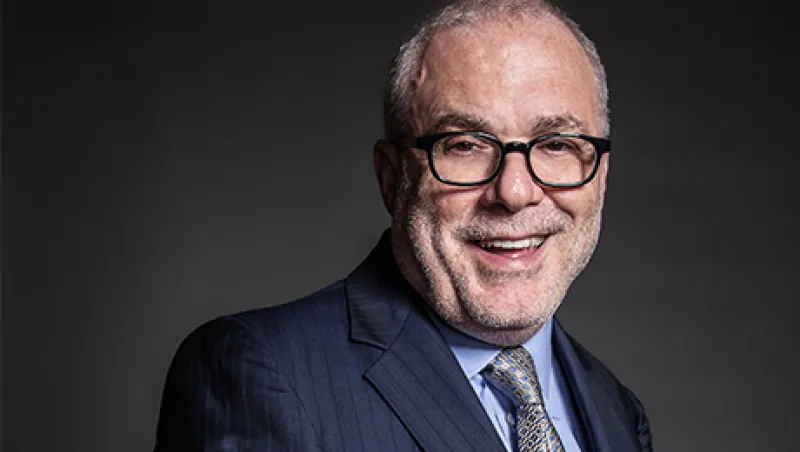Mark Bertolini has worked more than two decades at the highest levels of the health care industry, but the time that has most influenced how the Aetna chief executive runs his business was the two years he spent in or near a hospital bed. He says his perspective on the health care industry transformed during the months he was camped out in a hospital by his ailing son, and then shifted even further as he struggled through his own fight back to wellness after breaking his neck in five places in a skiing accident.
Bertolini’s career in the health insurance industry got off to a swift start in 1984, after he graduated from Cornell University with an MBA. He scrapped his plans to go into mortgage trading to return to his native Detroit at the behest of a friend who was starting a health maintenance organization. They formed what would become SelectCare, which quickly grew into one of the region’s largest HMOs and where Bertolini served as CEO from 1991 to 1995. He established a reputation as a fix-it person within the health care industry in the late 1990s, when he moved to New York Life Insurance Co. and helped spin its group assets into a new company, NYL Care Health Plans, working there as executive vice president for four years.
He moved to Cigna Corp. in 1999 to head its specialty-products business but quit after 18 months when he learned that his then-16-year-old son, Eric, had been diagnosed with a rare and aggressive form of cancer. In the year Bertolini spent in his son’s hospital room, he gained new and often heartbreaking insight into the U.S. health care system.
“It was frightening how many things went wrong,” he recalls. “It’s not because people are badly intended; it’s because the system hasn’t been designed around the person being taken care of. It’s been designed around the processes that each person is trained in. It was through that lens that I started to say, ‘We’ve got to start thinking about the people we’re taking care of as the outcome we need to generate — not the processes we’re doing when we’re taking care of these people.’”
Eric entered hospice care in July 2002, which Bertolini calls one of the most difficult moments of his life. “Putting him in hospice meant I had to admit he was going to die and that we could not get curative services for him anymore,” he says. Not long after, Bertolini says, he and Eric’s doctors found a newly approved drug that offered the promise of recovery, which revealed yet another paradox of the health care system: “When we found the drug, they said to me, ‘Mr. Bertolini, you know, if we start giving him this drug, we have to take him out of hospice.’ I said: ‘Geez, lifesaving drug or stay in a nice room? Get him out of the room!’”
In 2003, Eric made a sharp turnaround and was able to go home. Bertolini joined Aetna as head of specialty products, which included its pharmacy, behavioral health and dental businesses. Soon after Bertolini arrived Aetna’s then-CEO, John Rowe, asked for his input on reworking the company’s Compassionate Care Program, which offers services for people with advanced illnesses. Drawing from the worst of his experience with Eric’s illness, Bertolini suggested that the insurer allow its members in hospice to receive curative services and that it eliminate the requirement that they admit they’re going to die within six months of entering hospice. The result of those changes, he says, was an 89 percent reduction in inpatient bed days; 76 percent of patients in the program dying at home, compared with less than 25 percent before; and dramatic drops in cost, with attendant rises in quality of the patients’ end of life. “Now every Aetna member gets that program,” Bertolini says. “That was a direct result of my experience in the hospital with Eric.”
Only a year later it was Bertolini’s turn to assume the role of critical-care patient, after he broke his neck in five places while extreme skiing. After a year of struggling through recovery with traditional painkillers, he elected to manage the chronic pain he still endures using acupuncture, mindfulness meditation and yoga. He says the experience transformed the way he thinks about how the health care industry should measure ideal outcomes. The success he’s personally experienced through these alternative approaches has affected Aetna’s 49,000 employees, about a third of whom have taken advantage of the free yoga and meditation classes now offered at their offices.
Bertolini’s brush with serious disability — and worse — has affected his leadership style more indirectly, he says.
“When you realize that you can’t do it all yourself anymore and you need other people’s help, that actually improves quality of life and is pretty amazing,” he says. “That applies not only to your personal life but also to your professional life. Early in my career I would have said I had all the right answers and it was just a matter of letting everyone else catch up. I’d say now that I’m right less than half the time and it’s the inclusion of everybody around me that actually makes the idea a better one.”






